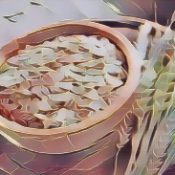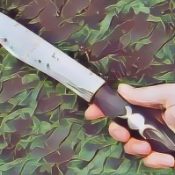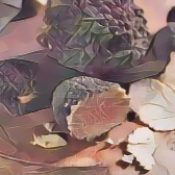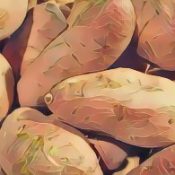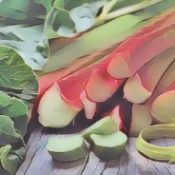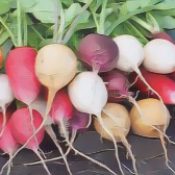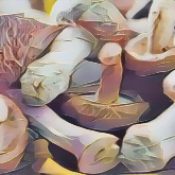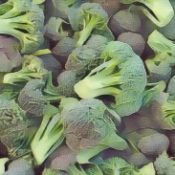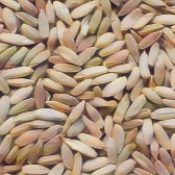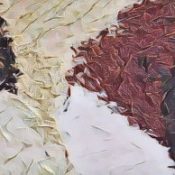Author: A Solitary Pagan
Kitchen Witch: Oat
(Avena sativa) Planet: Venus Element: Earth Energies: Money Lore: In Scotland, cakes known as bannocks were baked and eaten at Beltane, the old Pagan observance of May Day. Oatcakes are still eaten during some contemporary Witches rituals. Magical uses: Use only whole-grain oats. We can prepare and eat oatmeal first thing in the morning to bring money and prosperity into our lives. Other magical ...
Kitchen Witch: Potato
(Solanum tuberosum) Planet: Moon Element: Earth Energies: Protection, compassion Lore: The potato is a native of Peru, where it was first cultivated by about34000 B.C.E. It was introduced to Spain (and subsequently throughoutEurope) in 1534. It was immediately claimed that the potato was a sure-firecure for impotency. At times, it was sold for the equivalent of 1,000 dollars a pound. Potatoes lost...
Kitchen Witch: Knives
Knives were first created by flaking flint, jasper, and other cryptocrystalline quartzes into finely edged tools. The knife is ruled by Mars and the element of fire. This tool has been used both for life-threatening (stabbing) as well as life-affirming (cooking) purposes. It was the first implement used for eating, for it could both cut food as well as transfer it to the mouth.
Kitchen Witch: Truffle
(Tuber melanospermum) Planet: Venus Element: Water Energies: Love, sex Magical uses: The Romans believed that truffles were created by thunder. Add truffles to foods designed to increase your ability to give and to receive love. If that’s not the important issue, eat truffles to increase sexual desire.
Kitchen Witch: Sweet Potato
(Ipomoea batatas) Planet: Venus Element: Water Energies: Love, sex Lore: An English cookbook of 1596 includes the preparation of a sweet potato tart intended to excite sexual desires. Those sweetened, orange tubers often served at Thanksgiving are actually sweet potatoes, not yams. Yams certainly do exist and are eaten in large quantities in Africa, Central and South America, and the West Indies, ...
Kitchen Witch: Rhubarb
Planet: Venus Element: Earth Energies: Love, protection Magical uses: Rhubarb is native to China, where it is still used in medicinal herbalism. All parts of the plant are poisonous save for the red stalks. Rhubarb is a love food. The zingy taste ensures zingy, exciting relationshipsif rhubarb is prepared with visualization. Rhubarb or rhubarb/strawberry pie is one of the ultimate love foods. The ...
Kitchen Witch: Radish
Raphanus sativus. Planet: Mars Element: Fire Energies: Protection Lore: Wild radishes, eaten before breakfast, were once thought to protect the diner from being flogged and to enable one to overcome all obstacles and enemies. Magical uses: Slice thinly and eat for protection, especially in salads with onions, bell peppers, and other protective foods.
Kitchen Witch: Mushroom
Planet: Moon Element: Earth Energies: Psychic awareness Lore: Pharaohs in ancient Egypt ate mushrooms, but the common people did not. Romans believed that mushrooms provided strength to the body. Mushrooms, like all fungi, have long been regarded with suspicion. Their seemingly miraculous appearance overnight after a good rain, their mysterious ways of propagation, and their eerie appearance...
Kitchen Witch: Chili
(Capsicum spp.) Planet: Mars Element: Fire Energies: Protection Lore: From archaeological evidence found in Mexican caves, chili peppers seem to have first been cultivated 9,000 years ago. The Aztecs are said to have used chili peppers in rituals designed to exorcise spirits from possessed persons. Chili peppers were recently banned from one state’s prison system because the burning vegetables co...
Kitchen Witch: Broccoli
(Brassica spp.) Planet: Moon Element: Water Energies: Protection Magical uses: Broccoli is a fine addition to protective diets. Season with basil, garlic, and mustard seed for increased power
Kitchen Witch: Rye
Secale spp. Planet: Venus Element: Earth Energies: Love Magical uses: The familiar taste and smell of rye bread comes from the caraway seeds used in its creation, not from the rye. Rye, however, is a powerful addition to diets designed to increase your ability to give and to receive love. Caraway fits in here as well
Kitchen Witch: Rice
(Oryza sativa) Planet: Sun Element: Air Energies: Money, Sex, Fertility, Protection Lore: Rice is to Asia what corn is to the Americas. It has been laboriously cultivated and eaten in the East for thousands of years. Linked with deity and served at every meal, rice was and still is a vital staple food for many peoples. More than half of the world’s population regularly eats rice. It’s of central ...
